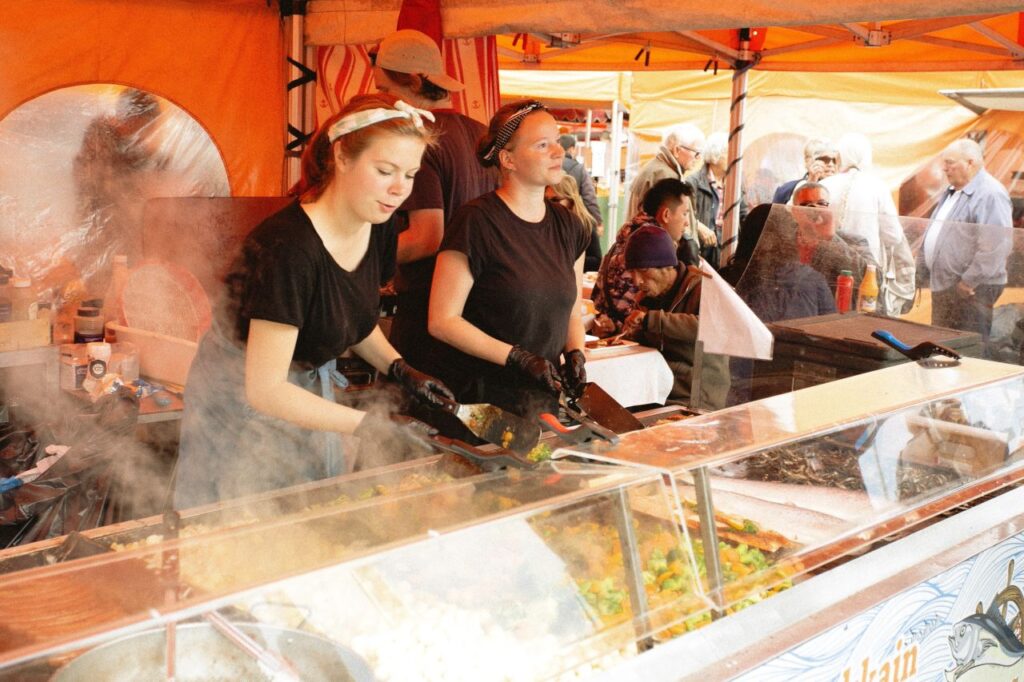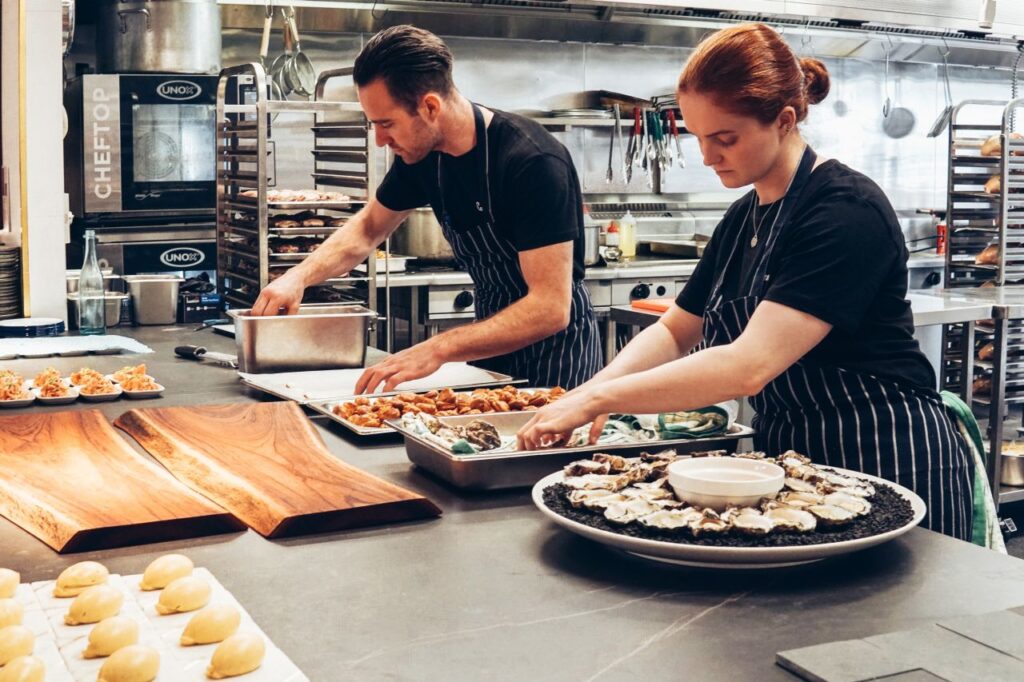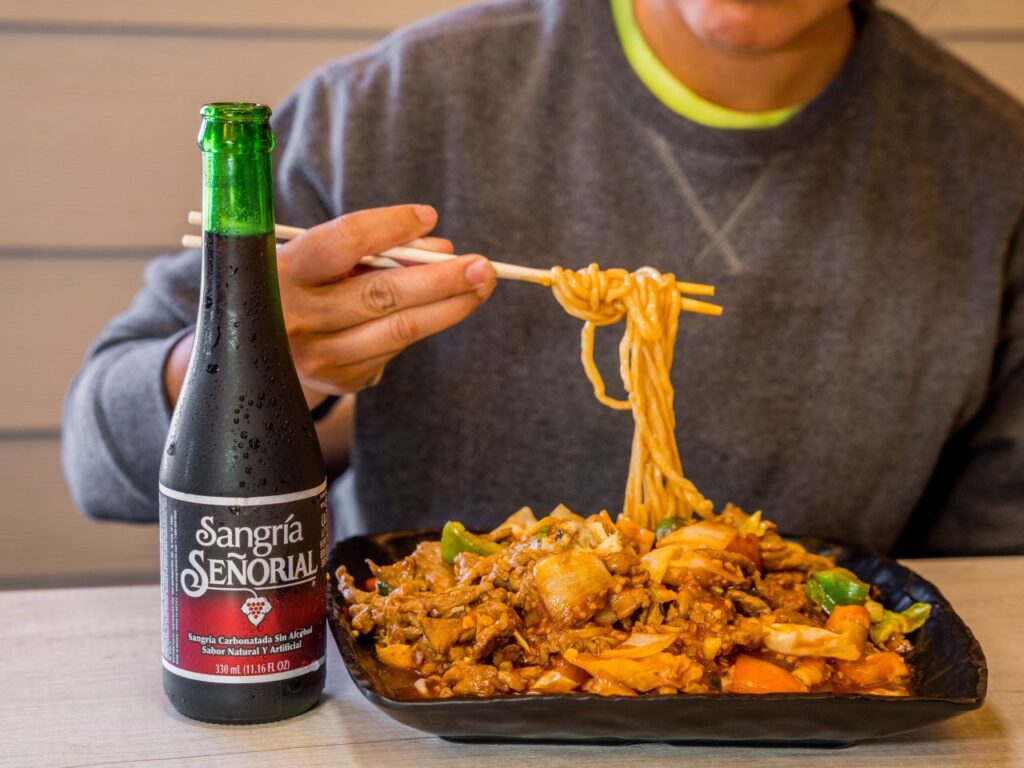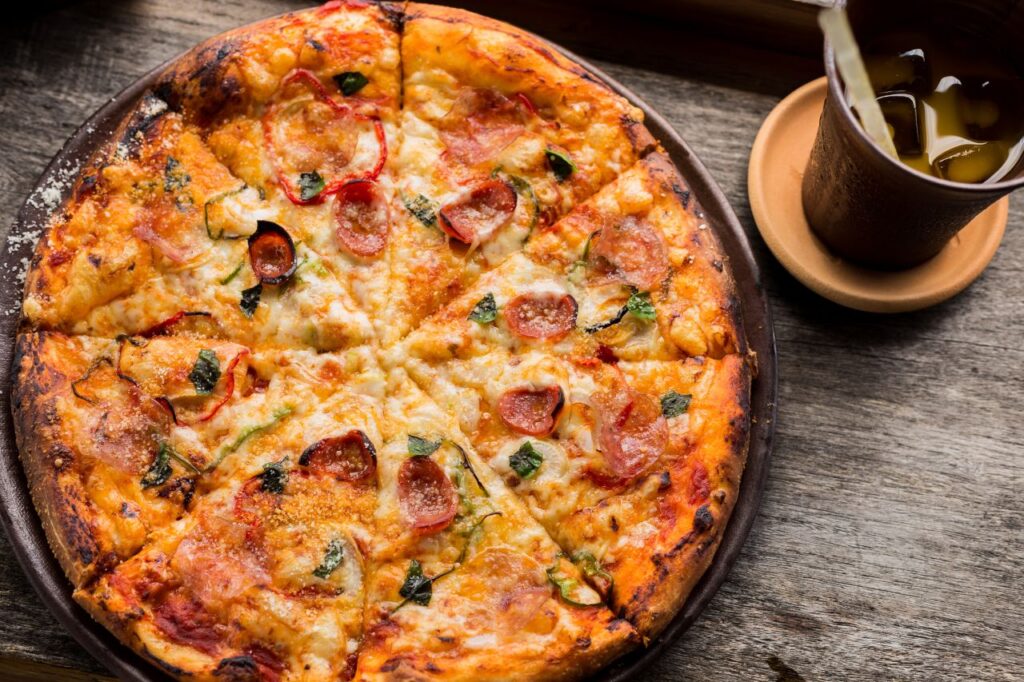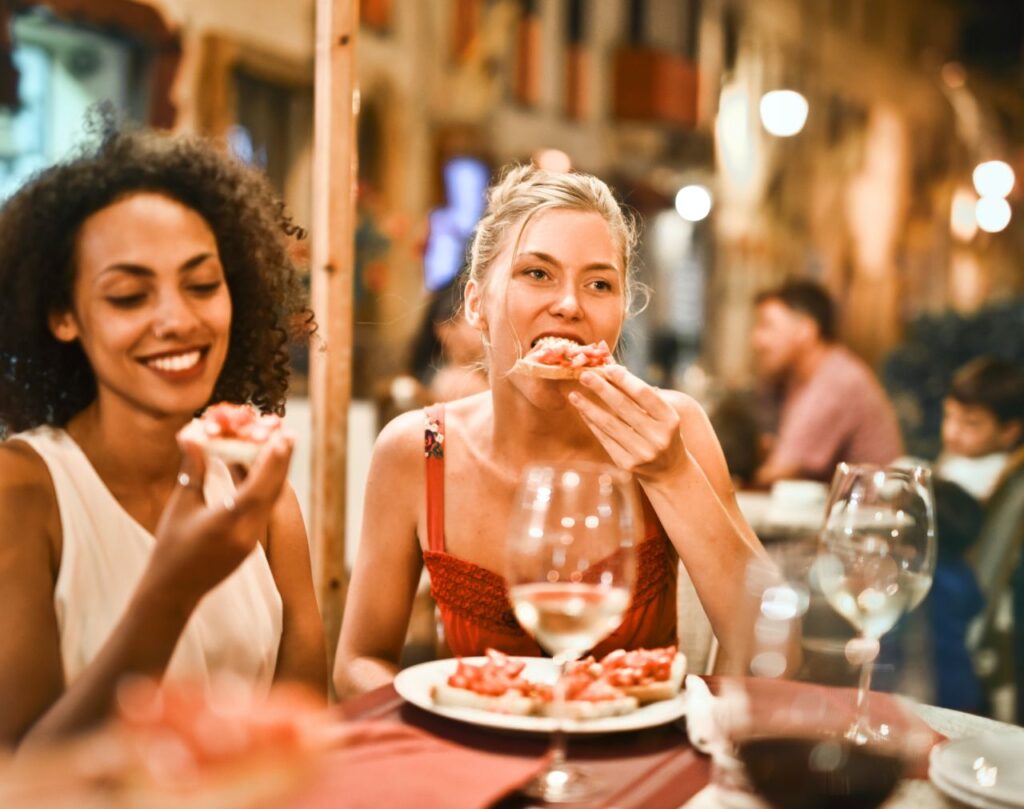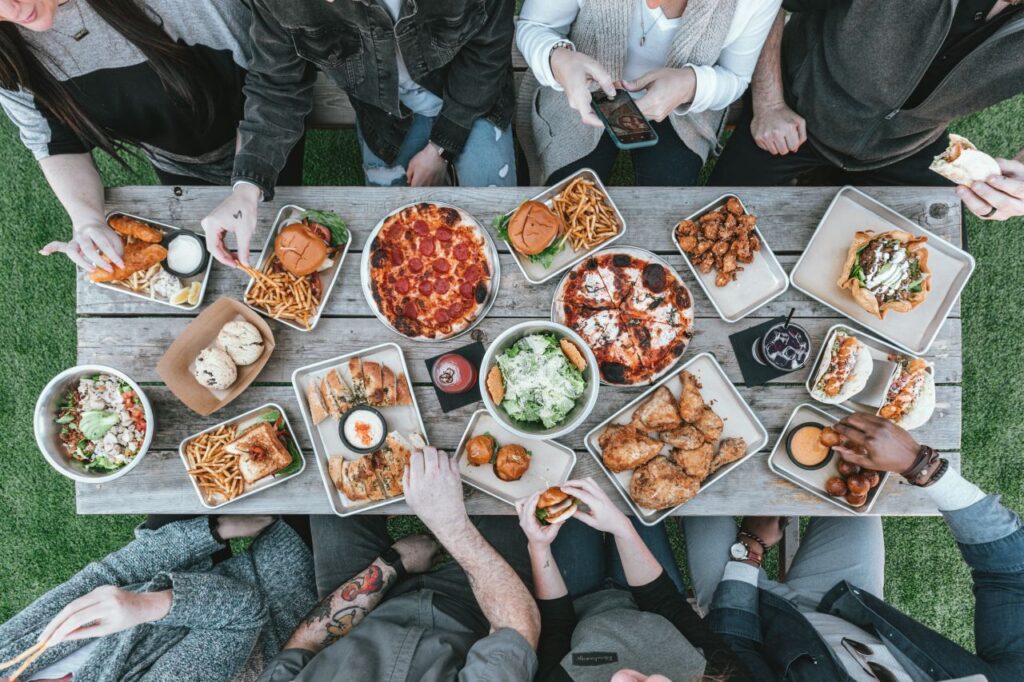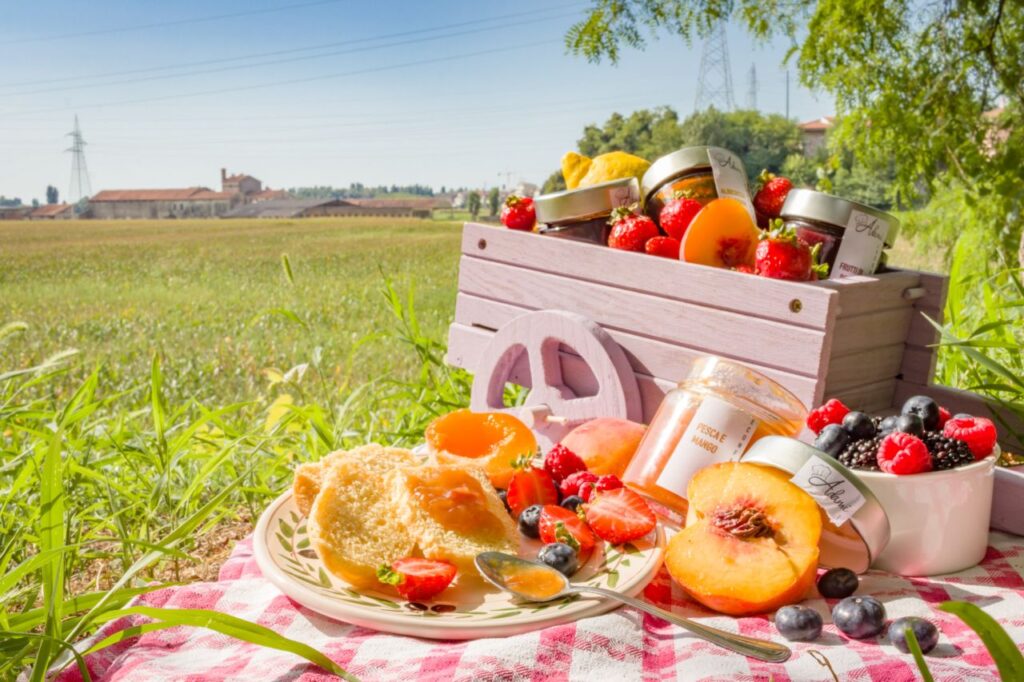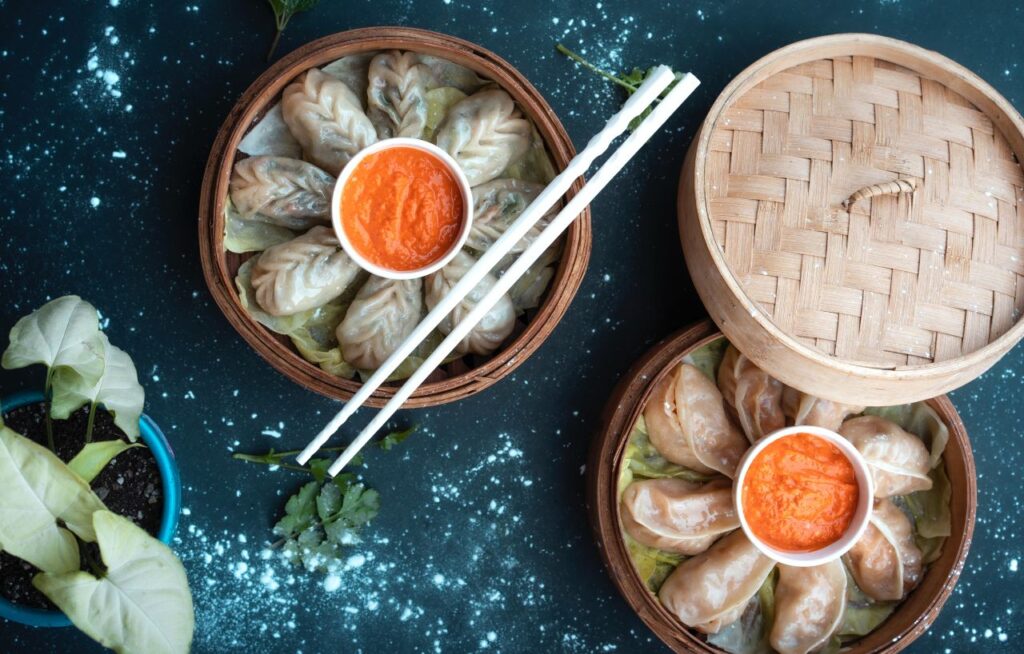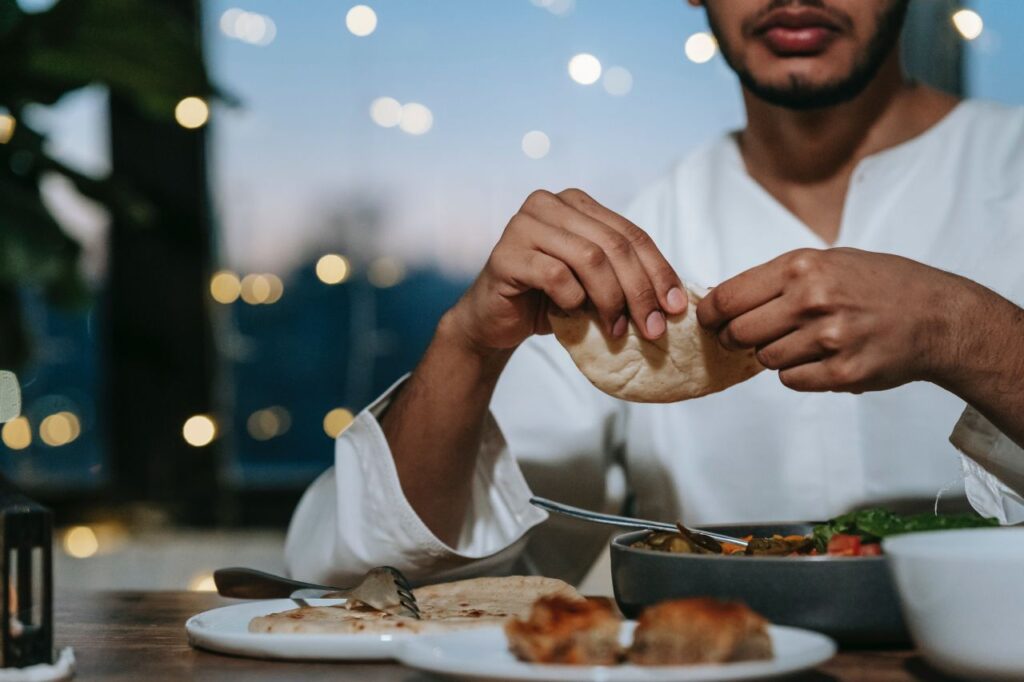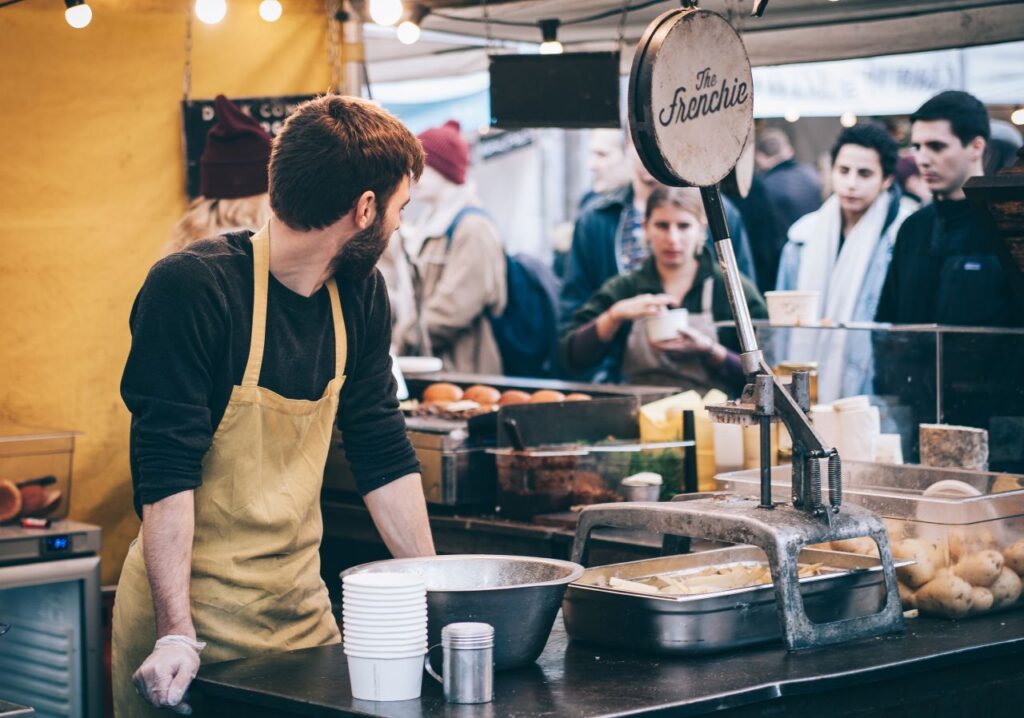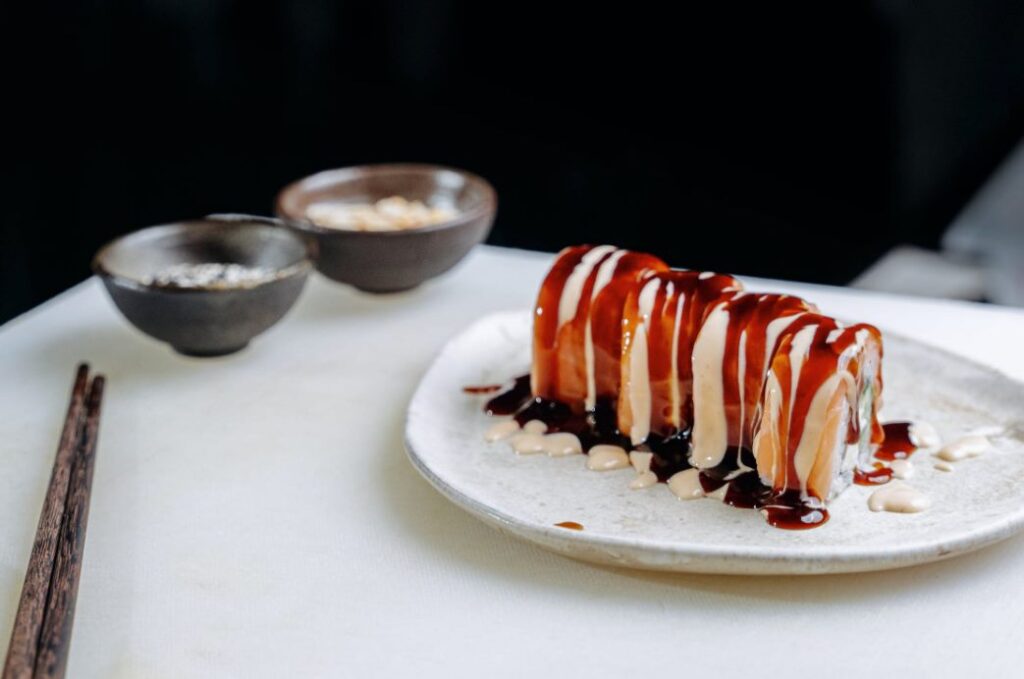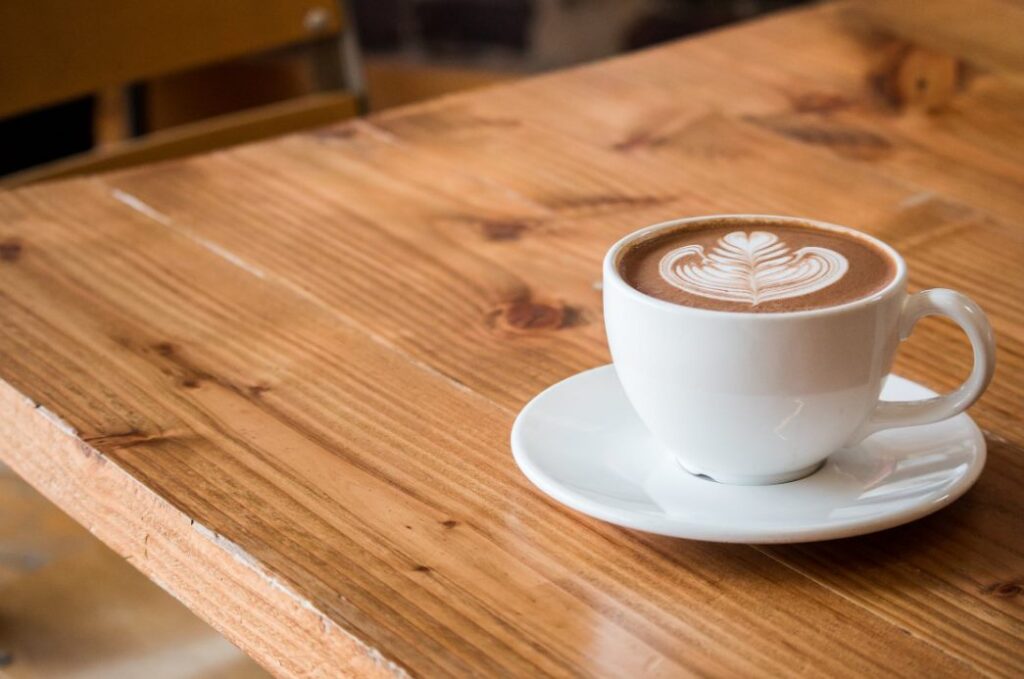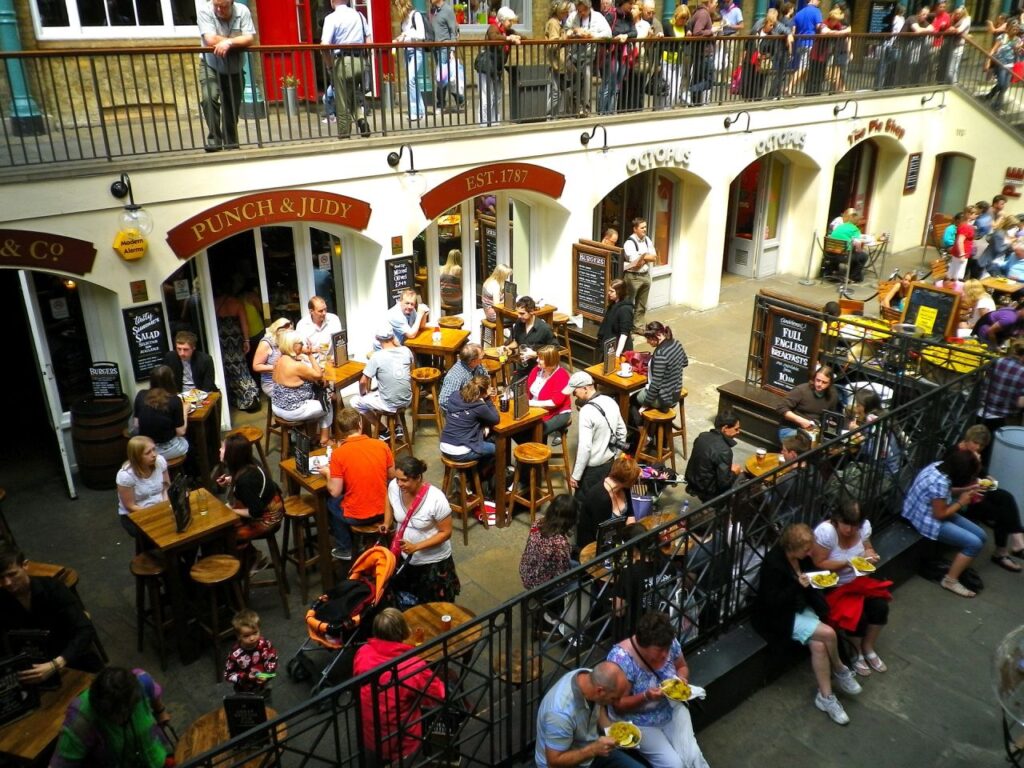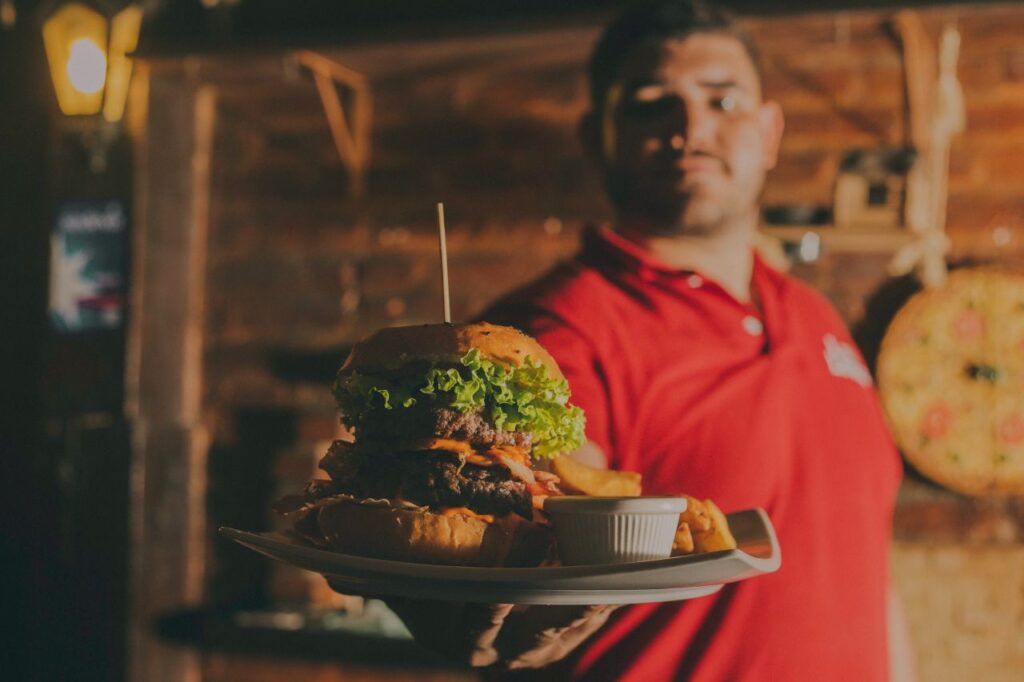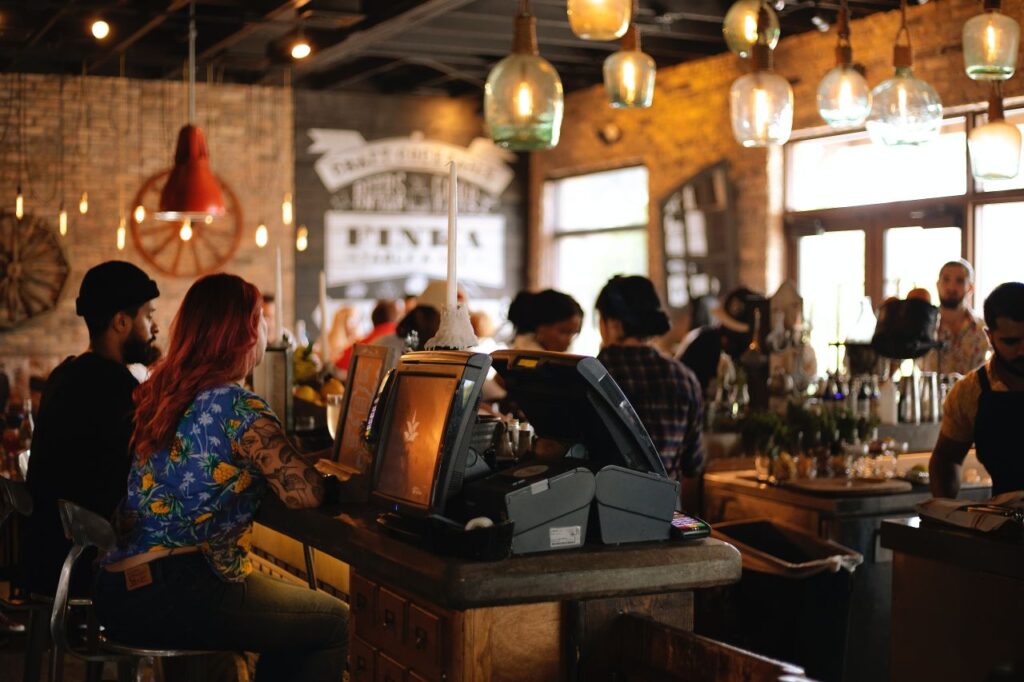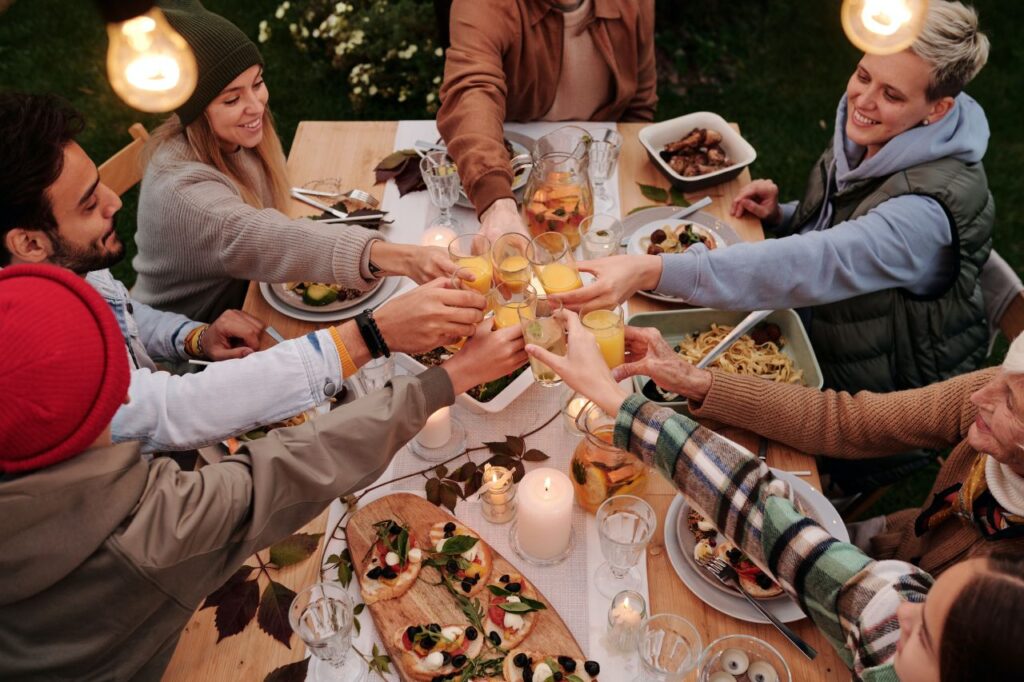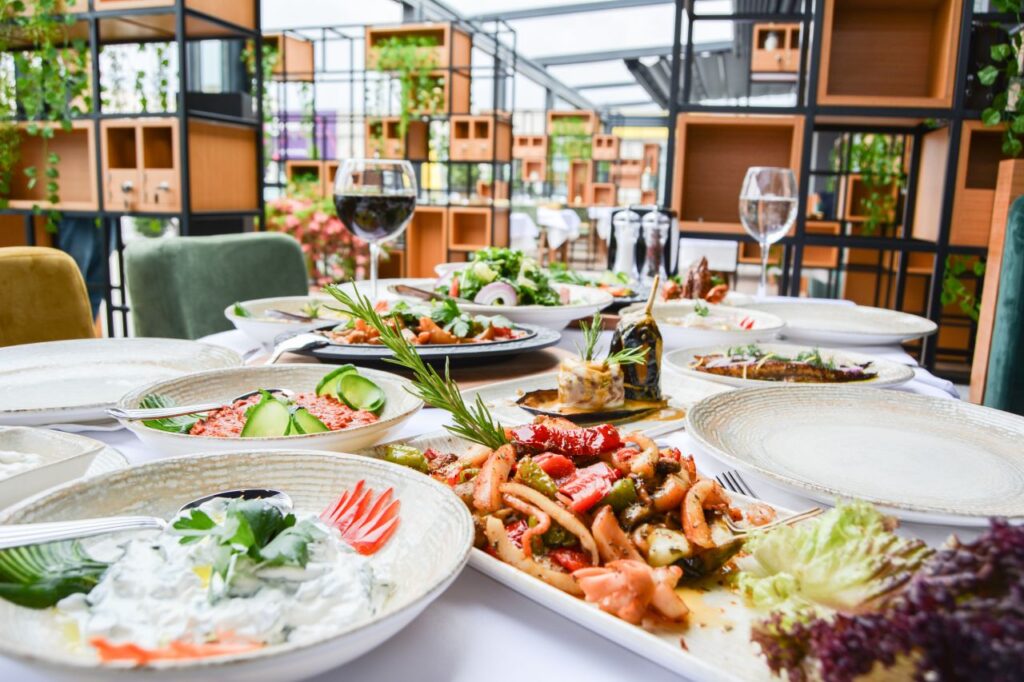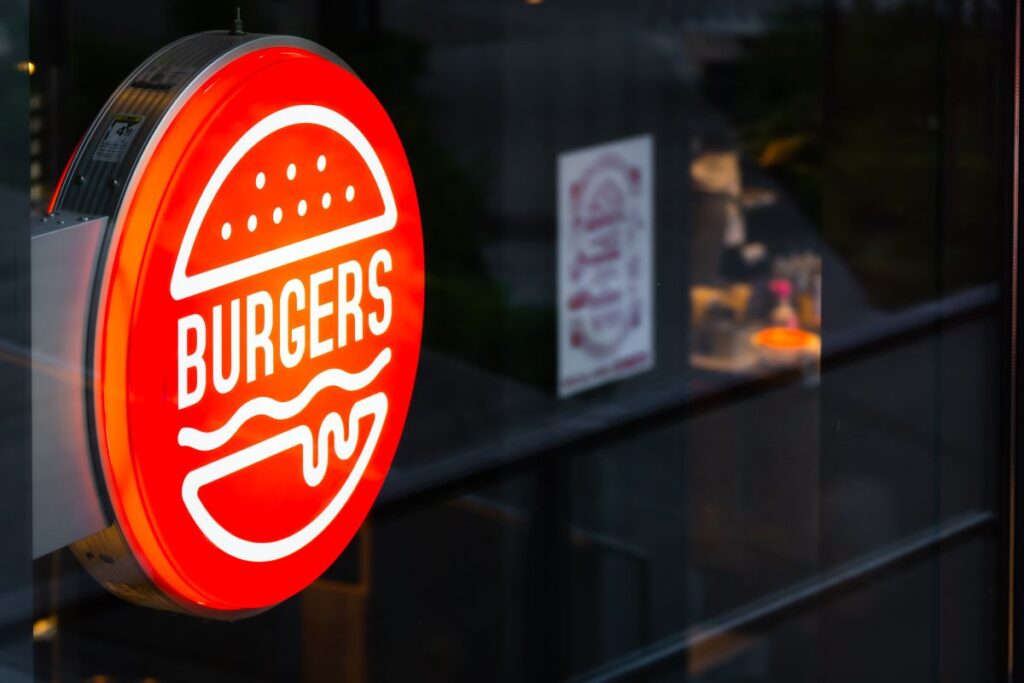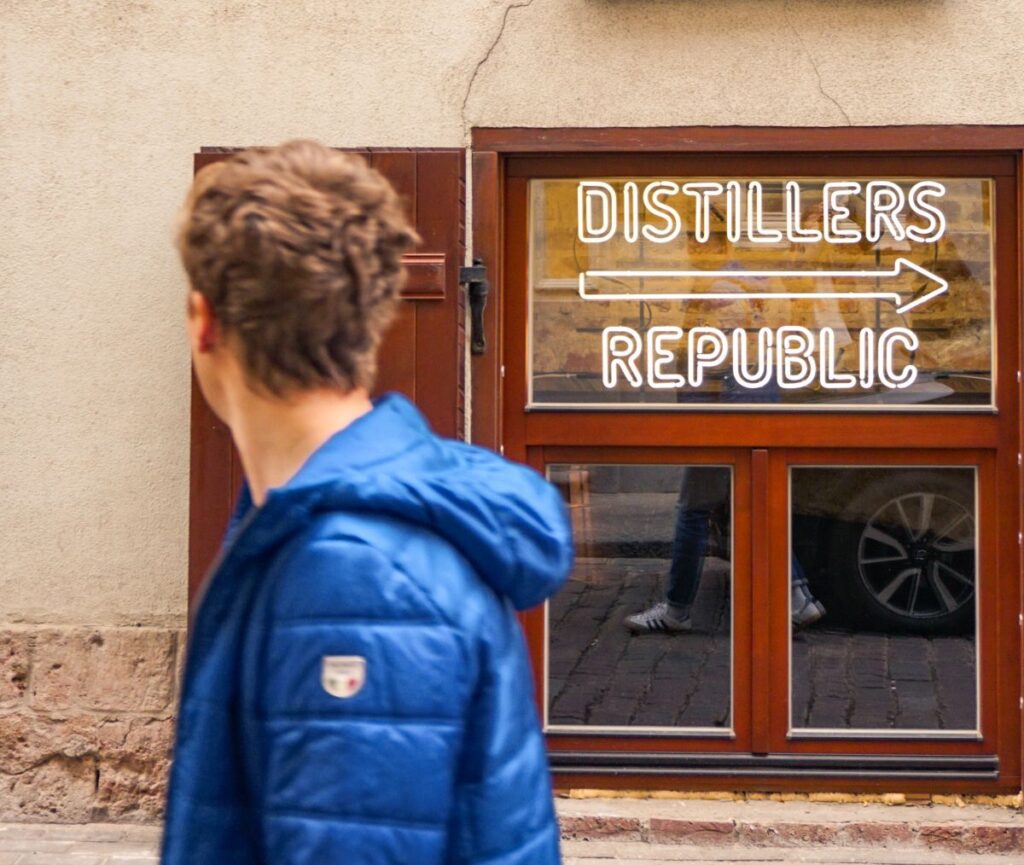Melbourne is the place to go if you're in search of scrumptious cuisine from a wide variety of restaurants. Many people in Australia consider this city to be the best place to eat because of the abundance of excellent eateries here.
There's a wide variety of options, from fast food to fine dining, so no one needs to go hungry. In addition, Melbourne's rich culture makes eating out an adventure in and of itself. Melbourne is the place to be if you want to try some new foods. The data show that Melbourne is the best place in Australia to eat out. Find out the backstory to Victoria's insatiable appetite.
More than 70 different national cuisines can be found on the menus of Melbourne's more than 3,500 restaurants. When it comes to food and wine festivals, Melbourne hosts the largest in the world. Each year, the festival draws in the neighbourhood of 300,000.
Victoria is known for its extensive wine industry, which includes 21 distinct wine regions, over 800 wineries, 600 cellar doors, and about 30 craft breweries. Every day, Melbourne brings in enough coffee beans to brew three million cups of coffee.
Since 2000, Melbourne has seen a roughly 780 percent increase in the quantity of coffee beans imported to the city. Around 2000 farmers sell their goods at legit farmers markets every month in Victoria.
The meat in the meat market is all Australian, with the majority coming from Victoria. Residents attest that the butchers there have a remarkable level of familiarity with their orders because some families have worked there for four generations.
Outside, people browse the fruit and vegetable stands and congregate in the centre to munch on doughnuts. You can find the American Doughnut Kitchen trailer between sheds H and I on Queen Street. Serving up traditional doughnuts with a dollop of red jelly since 1956, it has stood the test of time.
Stop by ReWine and sample some of the best wines Australia has to offer. On a chilly day, nothing beats a mug of their mulled wine. There are night markets every Wednesday from 5 pm to 10 pm, but the market is closed on Mondays, Wednesdays, and most public holidays.
The Ultimate Foodie Tour is a few hours of shopping and tasting with a local food expert for just $69. Plenty of new Australian restaurants are making a name for themselves in the multicultural foodie scene, despite the success of long-established establishments like Pellegrini's and Chin Chin in maintaining their superior reputations.
Cultural diversity
Annual presentations and client meetings are great chances for collaboration and networking, but they do require some sort of accommodation, such as food, in addition to the venue.
In such a situation, it is helpful to hire a catering service because they provide a more personal and discrete setting than a public eatery and have more leeway in developing a menu that suits your needs and those of your guests.
As a part of Melbourne's culinary landscape, catering provides a selection of menus that can be tailored to your specific needs. Tailor-made catering in Melbourne is a wonderful choice for making a good impression on potential business partners or rewarding current ones.
Having creative control over how food is served at an event allows you to make a statement and set the mood. A seasonal approach is taken when creating the menus, so in the summer you can enjoy a barbeque and in the winter you can enjoy some hearty, warm dishes.
Melbourne's cuisine defies classification. From simple Mediterranean favourites to molecular tours de force à la Heston Blumenthal, the world's cuisines are at your fingertips. Indulging your taste buds in the local cuisine and wine is guaranteed to be the highlight of your trip.
Fresh Australian produce
Everywhere in the city, chefs use fresh, locally sourced produce, with many having a special fondness for organic, artisanal ingredients. Indicating the source of the meat (preferably grass-fed or Wagyu beef from East Gippsland) is becoming increasingly common on menus.
Cheeses from Gippsland and the Yarra Valley are worth seeking out, as are Murray River pink salt grains and seafood caught in their native habitats (Pacific oysters and Coffin Bay scallops from neighbouring South Australia are hugely popular).
International Cuisine
Food from Spain, Lebanon, Morocco, Thailand, Malaysia, Turkey, Vietnam, and Ethiopia is becoming increasingly popular, and many of Melbourne's most exciting restaurants feature these cuisines. While Italian, French, and Chinese (specifically Cantonese) cuisines have long pedigrees in Melbourne, they are not the only ones.
Interestingly, and perhaps this is the secret to the widespread popularity of Australian cuisine, a chef will often look to other cultures' cuisines for inspiration and influence when creating a dish or menu.
A tender panna cotta could share the spotlight with mango-topped sticky rice, and a fragrant red Thai curry could sit next to a perfectly chargrilled rib-eye served with mash. Modern, exotic cuisine has arrived in Melbourne, and it's as exciting as it is reliable.
International Ingredients
Tapas bars use Ortiz anchovies, jamón serrano, and queso manchego; Italian restaurants use Carnaroli and Vialone Nano rice, Parmigiano Reggiano cheese, and Italian olive oils; and many other dishes feature imported artisan products (although the quality of local olive oil is improving every day).
Frequently Asked Questions About Food in Melbourne
A typical Aussie barbecue is with sausages, burgers, steak, fresh seafood, bread and tomato or barbecue sauce, they sometimes include salad but it's mainly about the meat and fish (and of course a few stubbies – that's beer to the non-Australians). Australians will literally have a barbeque anywhere, not just at home.
Melbourne Food and Wine Festival
The Melbourne Food and Wine Festival has been synonymous with the celebration of international cuisines since its inception in 1993. It features a number of activities meant to showcase Melbourne as Australia's premier dining destination.
There's something for everyone at MFWF, from cooking demonstrations to buffet lunches, wine tastings to tours of local breweries serving their wares. The fact that it draws thousands of food and wine experts from around the world every March is a testament to how far Melbourne's culinary scene has come.
Prior to the last few decades, many Australian chefs would spend time working in Europe to familiarise themselves with the industry and gain experience. Now, chefs from the United States, Asia, and Europe travel to Melbourne to experience the city's gastronomic bounty and become familiar with the city's cutting-edge culinary techniques.
An Innovative Approach To Food
There is truly something for everyone on the city's vast multicultural menus. Culinary adventurers can sample new flavours at the many restaurants tucked away in the alleys, while coffee lovers can sip the best brews Australia has to offer at any of the many cafes.
There is no rigid code of conduct to adhere to in a restaurant; rather, the atmosphere encourages a casual and uninhibited demeanour. Innovations in Australian cooking are common because of the country's laid-back attitude towards food.
When inspiration strikes, Australian chefs have a blank canvas to work with in the kitchen, with no preexisting culinary canon to stifle their creativity. They can make something completely novel, like a Japanese taco, because they aren't constrained by any preconceived notions of what a taco should be.
Furthermore, there is intense rivalry between businesses that all want the same thing: a larger clientele. That's why it's essential to take risks and come up with novel approaches to making tasty food in this cultural capital. It's a fact: if you're interested in Australian cuisine, Melbourne is the place to go. It hasn't always been this way, and seeing how far it's come is encouraging. It has carved out a niche for itself and secured a spot at the top of every foodie's bucket list with its consistent display of world-class culinary art.
Chef Ben Shewry's Attica is widely regarded as Australia's finest dining experience, making it one of the most coveted reservations in Melbourne, if not all of Australia. Local specialities such as kangaroo, crocodile, saltbush, and murnong are featured prominently on the restaurant's award-winning tasting menu (an Australian yam).
The freshwater crayfish known as marron is a menu mainstay that never fails to delight. The mildly sweet crustacean can be used in a variety of ways, and it complements the restaurant's seasonal menu. Because both ingredients originate in Western Australia, Shewry recommends pairing it with sunrise lime. This citrous twist makes the marron shine.
Caffeine Kick
In Melbourne, coffee dependency is a major issue. There's always a café on the corner, and patrons are picky about the quality of the coffee and the vibe they create.
Cup of Truth, centrally positioned in the Campbell Arcade, serves as an ideal stop for a quick cup of coffee before, during, or after work. After completing their order, patrons of the little espresso café are asked to pick up their honest change from a cup on the counter.
An adorable espresso shop has been operating out of the same three-by-one-meter space in the arcade for the past nine years. With Flinders Street Station undergoing renovations, the espresso bar's co-owner and 2013 winner of Melbourne's Best Barista Award, Courtney Patterson, has announced that they would be relocating the business.
His hope is that they will reach ten years in the location first. Krimper Café is a cosy, homey cafe located in a converted warehouse on the trendy and blooming Guildford Lane. Not only is the coffee excellent, but the brunch and lunch options are also fantastic.
Switchboard Cafe is located in what was formerly a telephone answering room for women in The Walk Arcade. Although it is one of Melbourne's smallest cafés, the toasties and coffee served there are among the city's finest.
Exactly when and by whom did that coffee arrive in Melbourne? Of course they were Italians. Cafe Florentino (now known as Grossi Florentino) in Melbourne, Australia, installed Australia's first espresso machine in 1928.
Spanish Snacks
For cutting-edge Spanish fare, more and more people are turning to the relatively new Henry Sugar. Michael Baker, the co-owner of Henry Sugar and a chef with Michelin training, was born in Alexandra, Central Otago, and spent time as a cook in Barcelona.
About a year and a half ago, he and co-owner Daniel Mason founded Henry Sugar. When it comes to Baker's cooking, simplicity is key; a typical dish won't include more than three or four components. Wines created with minimal human interference and handmade sodas are just two examples of the bar's creative beverage selection. Mason is always close by to provide complimentary wine pairings for each course.
Southeast Asian Food
The close, compact tables, broad cocktail selection, and emphasis on ordering and eating from shared platters give the Asian fusion restaurant Rice Paper Scissors its lively environment.
It costs $59 for lunch and $65 for supper for two individuals to order and split five things from the main menu. So unless you're a vegetarian, go for the Filipino BBQ pork.
A Taste Of China
There is a strong Chinese population in Box Hill, Melbourne, and many of its people have brought traditional Chinese dishes with them. Naturally, the restaurant's signature dish is its namesake roast duck.
The dumplings at Lu Yang Dumpling House are fantastic, and the restaurant has a tonne of different fillings to choose from. You can never go wrong with a Chinatown restaurant if you're in search of something quick and easy.
The Pizza
There are plenty of great Italian restaurants in Melbourne, but 400 Gradi in Brunswick is where you should eat. In 2014, at the event's annual gathering in Italy, Johnny Di Francesco of 400 Gradi was crowned World Pizza Champion. His Margherita pie bested entries from 600 dough-throwing pizza makers from 35 countries.
His eatery serves lunch and dinner seven days a week and is known for its authentic and tasty Italian fare. In addition to the Mediterranean Wholesalers, Brunswick is home to excellent Middle Eastern eateries such as Rumi and Mankoushé, as well as Middle Eastern bakeries such as A1.
Cheap And Cheerful Food
Degraves St is a great choice if you're looking for a fast sandwich, soup, tacos, or organic food. Pidapipo Gelateria, on Degraves St. not far from the Flinders Street train station, serves a wide variety of gelati, including blackberry and salted chocolate, ricotta, cannoli, and Nutella.
Even when it's freezing outdoors, a bowl of ice cream is always a smart idea. If you want to do some good for the community, head over to The Soup Place. Each day, for every $3.50 worth of soup sold, one homeless person is provided with a hot supper and a hot shower.
The pleasant note you put on the wall during the day is picked up and repaid during dinner. They have served more than 6,000 bowls of free soup to the homeless since they opened.
Conclusion
Melbourne has more than 70 different national cuisines on its menus. Every day, Melbourne imports enough coffee beans to brew three million cups of coffee. The meat in the meat market is all Australian, with the majority coming from Victoria. The Ultimate Foodie Tour is a few hours of shopping and tasting with a local food expert for just $69. Tailor-made catering in Melbourne is a wonderful choice for making a good impression on potential business partners or rewarding current ones.
Having creative control over how food is served at an event allows you to make a statement and set the mood. From simple Mediterranean favourites to molecular tours de force à la Heston Blumenthal, the city's cuisines are at your fingertips. Modern, exotic cuisine has arrived in Melbourne, and it's as exciting as it is reliable. Tapas bars use Ortiz anchovies, jamón serrano, and queso manchego; Italian restaurants use Carnaroli and Vialone Nano rice, Parmigiano Reggiano cheese, and Italian olive oils. The Melbourne Food and Wine Festival draws thousands of food and wine experts from around the world every March.
Melbourne has carved out a niche for itself as one of Australia's culinary hot spots. Chef Ben Shewry's Attica is widely regarded as Australia's finest dining experience. Krimper Café is a cosy, homey cafe located in a converted warehouse on the trendy Guildford Lane. Switchboard Cafe is located in what was formerly a telephone answering room for women in The Walk Arcade. Michael Baker is the co-owner of Henry Sugar and a chef with Michelin training.
Lu Yang Dumpling House has a tonne of different fillings for your dumplings. Rice Paper Scissors' signature dish is its namesake roast duck. It costs $59 for lunch and $65 for supper for two individuals to order and split five things. If you're looking for a quick bite to eat in Melbourne, head over to 400 Gradi or The Soup Place. Pidapipo Gelateria serves a wide variety of gelati, including blackberry and salted chocolate, ricotta, cannoli, and Nutella. For every $3.50 worth of soup sold, one homeless person is provided with a hot supper and a hot shower.
Content Summary
- Melbourne is the place to go if you're in search of scrumptious cuisine from a wide variety of restaurants.
- Many people in Australia consider this city to be the best place to eat because of the abundance of excellent eateries here.
- There's a wide variety of options, from fast food to fine dining, so no one needs to go hungry.
- In addition, Melbourne's rich culture makes eating out an adventure in and of itself.
- Melbourne is the place to be if you want to try some new foods.
- The data show that Melbourne is the best place in Australia to eat out.
- Find out the backstory to Victoria's insatiable appetite.
- More than 70 different national cuisines can be found on the menus of Melbourne's more than 3,500 restaurants.
- When it comes to food and wine festivals, Melbourne hosts the largest in the world.
- Victoria is known for its extensive wine industry, which includes 21 distinct wine regions, over 800 wineries, 600 cellar doors, and about 30 craft breweries.
- Every day, Melbourne brings in enough coffee beans to brew three million cups of coffee.
- Since 2000, Melbourne has seen a roughly 780 percent increase in the quantity of coffee beans imported to the city.
- Around 2000 farmers sell their goods at legit farmers markets every month in Victoria.
- The meat in the meat market is all Australian, with the majority coming from Victoria.
- Stop by ReWine and sample some of the best wines Australia has to offer.
- Plenty of new Australian restaurants are making a name for themselves in the multicultural foodie scene, despite the success of long-established establishments like Pellegrini's and Chin Chin in maintaining their superior reputations.
- In such a situation, it is helpful to hire a catering service because they provide a more personal and discrete setting than a public eatery and have more leeway in developing a menu that suits your needs and those of your guests.
- As a part of Melbourne's culinary landscape, catering provides a selection of menus that can be tailored to your specific needs.
- Tailor-made catering in Melbourne is a wonderful choice for making a good impression on potential business partners or rewarding current ones.
- Melbourne's cuisine defies classification.
- From simple Mediterranean favourites to molecular tours de force à la Heston Blumenthal, the world's cuisines are at your fingertips.
- Indulging your taste buds in the local cuisine and wine is guaranteed to be the highlight of your trip.
- Fresh Australian produce Everywhere in the city, chefs use fresh, locally sourced produce, with many having a special fondness for organic, artisanal ingredients.
- International Cuisine Food from Spain, Lebanon, Morocco, Thailand, Malaysia, Turkey, Vietnam, and Ethiopia is becoming increasingly popular, and many of Melbourne's most exciting restaurants feature these cuisines.
- While Italian, French, and Chinese (specifically Cantonese) cuisines have long pedigrees in Melbourne, they are not the only ones.
- Modern, exotic cuisine has arrived in Melbourne, and it's as exciting as it is reliable.
- The Melbourne Food and Wine Festival has been synonymous with the celebration of international cuisines since its inception in 1993.
- It features a number of activities meant to showcase Melbourne as Australia's premier dining destination.
- There's something for everyone at MFWF, from cooking demonstrations to buffet lunches, wine tastings to tours of local breweries serving their wares.
- The fact that it draws thousands of food and wine experts from around the world every March is a testament to how far Melbourne's culinary scene has come.
- Prior to the last few decades, many Australian chefs would spend time working in Europe to familiarise themselves with the industry and gain experience.
- Now, chefs from the United States, Asia, and Europe travel to Melbourne to experience the city's gastronomic bounty and become familiar with the city's cutting-edge culinary techniques.
- There is truly something for everyone on the city's vast multicultural menus.
- There is no rigid code of conduct to adhere to in a restaurant; rather, the atmosphere encourages a casual and uninhibited demeanour.
- Innovations in Australian cooking are common because of the country's laid-back attitude towards food.
- When inspiration strikes, Australian chefs have a blank canvas to work with in the kitchen, with no preexisting culinary canon to stifle their creativity.
- It's a fact: if you're interested in Australian cuisine, Melbourne is the place to go.
- It has carved out a niche for itself and secured a spot at the top of every foodie's bucket list with its consistent display of world-class culinary art.
- Chef Ben Shewry's Attica is widely regarded as Australia's finest dining experience, making it one of the most coveted reservations in Melbourne, if not all of Australia.
- Local specialities such as kangaroo, crocodile, saltbush, and murnong are featured prominently on the restaurant's award-winning tasting menu (an Australian yam).
- In Melbourne, coffee dependency is a major issue.
- Krimper Café is a cosy, homey cafe located in a converted warehouse on the trendy and blooming Guildford Lane.
- For cutting-edge Spanish fare, more and more people are turning to the relatively new Henry Sugar.
- Michael Baker, the co-owner of Henry Sugar and a chef with Michelin training, was born in Alexandra, Central Otago, and spent time as a cook in Barcelona.
- About a year and a half ago, he and co-owner Daniel Mason founded Henry Sugar.
- When it comes to Baker's cooking, simplicity is key; a typical dish won't include more than three or four components.
- The close, compact tables, broad cocktail selection, and emphasis on ordering and eating from shared platters give the Asian fusion restaurant Rice Paper Scissors its lively environment.
- So unless you're a vegetarian, go for the Filipino BBQ pork.
- There is a strong Chinese population in Box Hill, Melbourne, and many of its people have brought traditional Chinese dishes with them.
- You can never go wrong with a Chinatown restaurant if you're in search of something quick and easy.
- There are plenty of great Italian restaurants in Melbourne, but 400 Gradi in Brunswick is where you should eat.
- In 2014, at the event's annual gathering in Italy, Johnny Di Francesco of 400 Gradi was crowned World Pizza Champion.
- His eatery serves lunch and dinner seven days a week and is known for its authentic and tasty Italian fare.
- In addition to the Mediterranean Wholesalers, Brunswick is home to excellent Middle Eastern eateries such as Rumi and Mankoushé, as well as Middle Eastern bakeries such as A1.
- Degraves St is a great choice if you're looking for a fast sandwich, soup, tacos, or organic food.
- If you want to do some good for the community, head over to The Soup Place.
- They have served more than 6,000 bowls of free soup to the homeless since they opened.

